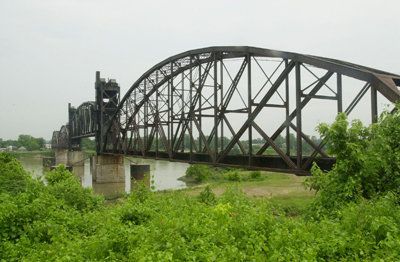
Not all infrastructure has been created equal. Some parts are yesterday, and should be relegated to the famous dust bins of history rather than cemented into our future. Their light is blinking red -- stop investing in them, as much as is politically possible. The best examples are those elements of our infrastructure that serve cars and encourage the use of fossil fuels. Contrast them with green industries, led by providers of public transportation and of sustainable energy sources such as wind and solar power.
To sharply separate the elements of red and green infrastructure is not some academic exercise, although I grant you that professors thrive on making such distinctions. At issue is nothing less than the Christmas list that Obama is preparing for us in the form of a massive stimulus package. He plans to introduce a major "infrastructure" program of which he spoke in a radio address on December 6: "I have asked my economic team to develop an economic recovery plan for both Wall Street and Main Street that will help save or create at least two and a half million jobs, while rebuilding our infrastructure, improving our schools, reducing our dependence on oil, and saving billions of dollars." However, there is no clear indication which kinds or elements of infrastructure will be favored versus left out. Observers report generally that "It's now clear that Obama intends to stimulate the economy through large direct government spending on infrastructure projects as well as through business and individual tax cuts." However, they do not report on any distinctions between various elements of the infrastructure, whether you call them red and green or otherwise realize that they greatly differ from one another in terms of the place they ought to have in our future.
You may say, "Wait a moment, I heard Obama repeatedly stating that he will make green jobs, support green industries, and work for energy independence." True enough, but these welcome moves are not part of the infrastructure package, but additional measures to which we are told about 10% of the funds, or $50 billion, will be dedicated. Good idea; however, this does not mean that we should refrain from asking to what the majority of the funds will be dedicated. News suggests at least initially much of the funds will go to red infrastructure, which may be unavoidable, but one could add green conditions. "Public works" may indeed be needed, but let's make those green ones, too. For instance, just granting money to states and localities will not do; strings should be attached ensuring that funds will be dedicated to green infrastructure and not to favorite projects that serve the automobile.
The list is not difficult to draw: Buses and passenger vans should be on the green list, not cars. Hence no funds for highways, roads, and bridges unless they first set aside bicycle lanes and diamond lanes for public transportation. Funds for light rails are green. The same is true for new sources of energy, domestically generated, and for fixing our antiquated electrical grid. Not so for loans to nowhere for auto makers.
One can differ about what exactly is to be included in the green list, and for which elements of our infrastructure the red light should be flashing. However, hopefully, as we respond to the questionnaires Obama and his team are emailing to people, we will be sure to note that the grand drive to improve the infrastructure of the nation should let the old elements wither away, and promote those a 21st Century economy requires.
Amitai Etzioni is a University Professor at The George Washington University, and the author of The Moral Dimension: Toward a New Economics. He can be reached at comnet@gwu.edu
